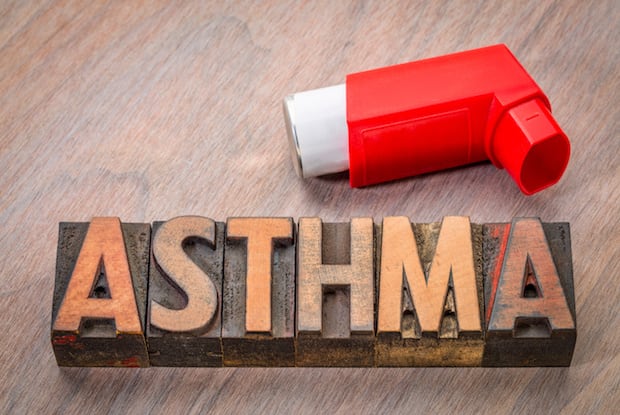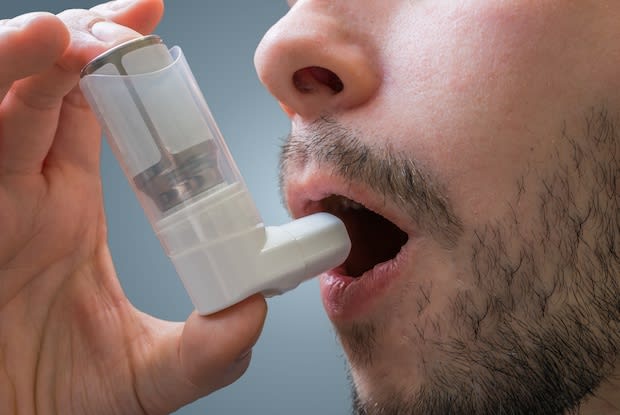Table of Contents
II. Causes of Childhood Asthma
III. Symptoms of Childhood Asthma
a. Signs of Severe Asthma in Children
IV. Childhood Asthma Treatments
a. Long-term Control Medications
What is Asthma?
Asthma is a lung disease that can make it difficult to breathe. Asthma causes breathing difficulties and can also make it difficult to talk or be active. Asthma is common in children but can affect people of all ages. Around 25 million Americans have asthma and it causes almost two million visits to the emergency room annually. [1] [2]
a. Asthma in Children
Asthma is the most common chronic disease in children and affects around 12.5% of children. [3] In the United States, it affects around 6 million children and can result in disrupted sleep, play, and missed days at school. Most children that have asthma develop symptoms before they turn five years old. [4]
Asthma causes the airways to swell and become inflamed. When the airways swell, breathing becomes more difficult as less air can pass into the lungs. As well as breathing difficulty, this can cause wheezing, coughing, and chest tightness.
It is not known what exactly causes asthma, but it is believed to be a mixture of genetic and environmental factors. According to the World Health Organization, these two factors play a roughly equal role in developing asthma. [5] Research shows that when one parent has asthma or a doctor’s diagnosis of allergies, there is around a 50 percent chance that a child will develop asthma. When both parents have diagnosed asthma or allergies, the likelihood is 75 percent. [3] Environmental factors that can increase the chance of children developing asthma include second-hand smoke, large amounts of house dust, and pets. These factors individually may not cause asthma, but they can increase the chance of developing asthma if children have the appropriate genes. [3] For children that are younger than three, the most common cause of asthma is having a cold. Even once the cold subsides, asthma symptoms may persist. Asthma triggers are things that set off an asthma attack or a flare-up of symptoms. Asthma triggers can be allergic and non-allergic and can be found anywhere. More than 80 percent of asthma patients have allergic triggers and common triggers include pollen or dust mites. [3] Common non-allergic triggers include smoke, infections, and exercise. Exercise is a very common trigger in children, and this can have a large negative effect on their quality of life when asthma is not managed correctly. Asthma symptoms can range from very mild to severe and may affect children and adults regularly throughout their lives or only very infrequently. [3] When asthma flares-up, patients may show signs of breathing difficulties or gasping for air. Additionally, asthma may cause chest tightness, coughing, wheezing, and an increased heart rate. In children, asthma symptoms may vary between each episode, so it is important to stay alert. Coughing is a symptom of asthma in people of all ages, but can often be the only symptom in children. Coughing may occur during the night or while playing or laughing. Other signs to watch out for in children include a see-saw motion in the chest, lack of energy, and general fatigue. [2] [6] In addition to the previous symptoms, other signs may indicate that your child’s asthma is severe. If you notice the following symptoms, speak to your doctor as they could indicate that your child’s asthma is not being controlled sufficiently. These include: Asthma is a chronic condition and there is no known cure. However, prescription medications can help to control the symptoms of asthma and to relieve sudden shortness of breath. Long-term asthma medications are usually taken daily and are used to control the symptoms of asthma. Usually, asthma medications come in the form of inhalers. A common type of control medication is a corticosteroid. This is a potent steroid that works by reducing the swelling and inflammation in the airways. When using corticosteroid inhalers, children may benefit from using a spacer device with the inhaler. Common corticosteroids include Flovent HFA (fluticasone) and Qvar (beclomethasone). Another form of control inhaler is a bronchodilator. Bronchodilators work by relaxing muscles that surround the airways. However, when treating asthma in children, bronchodilators are usually given as part of a combination drug. Combination inhalers combine a corticosteroid drug with a bronchodilator. Popular combination inhalers include Advair Diskus (fluticasone and salmeterol) and Symbicort (budesonide and formoterol). It is worth noting that corticosteroid inhalers and combination inhalers that contain corticosteroids may temporarily slow growth in children during the first year they are taken. This is something that should be monitored by caregivers and doctors. [7] Quick-relief or ‘rescue’ inhalers are shorting-acting drugs that are used to relieve asthma attacks and sudden shortness of breath. Some children will require both a control medication and a quick-relief inhaler depending on the severity of asthma. The most commonly used short-acting asthma inhaler is Ventolin HFA (albuterol). This medication works by opening breathing passages and relaxing muscles in the airways. [8] If children regularly need to use their quick-relief inhaler, then their asthma is not under control and you may need to see a doctor. The content in this article is intended for informational purposes only. This website does not provide medical advice. In all circumstances, you should always seek the advice of your physician and/or other qualified health professionals(s) for drug, medical condition, or treatment advice. The content provided on this website is not a substitute for professional medical advice, diagnosis or treatment.
Causes of Childhood Asthma
a. Asthma Triggers
Symptoms of Childhood Asthma

a. Signs of Severe Asthma in Children
Childhood Asthma Treatments
a. Long-term Control Medications

b. Quick-Relief Inhalers
